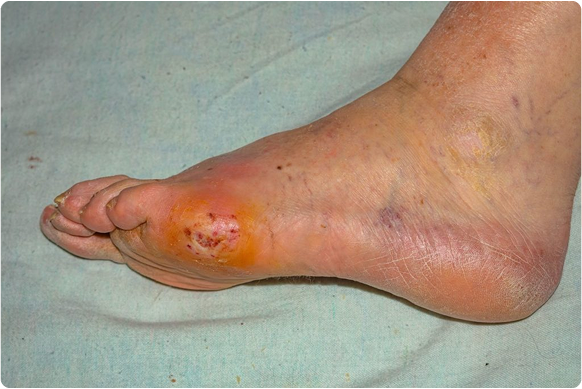CONDITIONS TREATeD / NEUROPATHY
Regenerate. Repair. Restore.
Stem Cells Therapy for Neuropathy And Diabetic

What is Neuropathy?
Neuropathy is a condition in which one or more nerves are damaged or dysfunctional, causing numbness, tingling, muscle weakness, and pain in affected areas.
Diabetic neuropathy is a common and serious diabetic condition that damages the nerves throughout the body due to persistent high levels of blood sugar (glucose). Diabetic neuropathy symptoms can range from mild to severe, depending on which nerves are affected.
According to the National Institute of Diabetes and Digestive and Kidney Disease, diabetic neuropathy affects 60-70% of people with type 1 and type 2 diabetes.
What is Neuropathy?
- Alcoholism
- Bone marrow disorders
- Autoimmune disease
- Kidney disease
- Liver disease
- Hypothyroidism
- Idiopathic: no known cause
- Infections
- Inherited disorders
- Medications
- Poisons
- Trauma
- Tumors
- Vitamin deficiency
- Viruses
Can stem cell therapy improve the signs and symptoms of COPD?
- Peripheral neuropathy
- Proximal neuropathy
- Autonomic neuropathy
- Focal neuropathy
- Cranial neuropathy
It is possible to have one or more of the four types of neuropathies. Neuropathies can be confusing, difficult to diagnose accurately, and extremely painful.
Diabetic neuropathy can lead to other serious medical conditions including:
- Heart attack
- Digestive issues
- Foot ulcers
- Amputation
- Increased difficulty controlling blood sugar levels
Causes of neuropathy?
Causes of neuropathy include diabetes, chemo-induced neuropathy, genetics, inflammatory infections, auto-immune diseases, protein abnormalities, toxic chemicals, poor nutrition, alcoholism, medications, and kidney failure.
Although the exact cause of diabetic neuropathy is still unknown, scientists believe it is caused due to high blood sugar levels. Other contributing factors include inflammation, high cholesterol levels, high triglycerides, elevated blood pressure, smoking and obesity. Evidence suggests that the nerve damage begins early in the disease and individuals with prediabetes already have some nerve damage. Diabetic neuropathy affects children, teens and adults.
How can stem cells improve the symptoms of neuropathy or diabetic neuropathy?
Research shows that stem cells improve neuropathy by directly modulating both, angiogenesis (the physiological process through which new blood vessels form) and myelination (the process of myelin sheath formation around a nerve to allow nerve impulses to move more quickly).
There are currently 47 studies listed on ClinicalTrials.gov evaluating the safety and or efficacy of stem cells for the treatment of diabetic neuropathy. (https://clinicaltrials.gov/ct2/results?cond=Diabetic+Neuropathies&term=stem+cell+therapy&cntry=&state=&city=&dist=)
Mesenchymal stem cells are self-renewing cells that can be found in almost all organs and tissues, including bone marrow, adipose tissue, umbilical cord blood, compact bone, and others.
Based on clinical research, the World Health Stem Cells in Costa Rica recommends the use of umbilical cord derived mesenchymal stem cells for the treatment of diabetic neuropathy.
Are You a Candidate for Stem Cell Therapy?
Stem cell therapy can change the quality of life for many, however not everyone is a candidate. Call our caring, experienced team to find out if stem cell therapy is right for you +1-305-777-7119
Please fill this form
Scientific References:
- Fu et al. Stem cell transplantation therapy in Parkinson’s disease. SpringerPlus (2015) 4:597
- Joyce et al. Mesenchymal stem cell for the treatment of neurodegenerative disease. Regen Med. 2010, November, 5(6)933-946. Doi:10.2217/rme.10.72
- Helena Vilaça-Faria, António J. Salgado and Fábio G.
- Teixeira Mesenchymal Stem Cells-derived Exosomes: A New Possible Therapeutic Strategy for Parkinson’s disease. Cells2019, 8(2), 118; doi:3390/cells8020118
Teixeira, F.G.; Carvalho, M.M.; Neves-Carvalho, A.; Panchalingam, K.M.; Behie, L.A.; Pinto, L.; Sousa, N.; Salgado, A.J. Secretome of mesenchymal progenitors from the umbilical cord acts as modulator of neural/glial proliferation and differentiation. Stem Cell Rev.2015, 11, 288–297. [Google Scholar] [CrossRef] [PubMed] - Gao, F.; Chiu, S.M.; Motan, D.A.; Zhang, Z.; Chen, L.; Ji, H.L.; Tse, H.F.; Fu, Q.L.; Lian, Q. Mesenchymal stem cells and immunomodulation: current status and future prospects. Cell Death Dis.2016, 7, e2062. [Google Scholar] [CrossRef] [PubMed]
- Joyce, N.; Annett, G.; Wirthlin, L.; Olson, S.; Bauer, G.; Nolta, J.A. Mesenchymal stem cells for the treatment of neurodegenerative disease. Med.2010, 5, 933–946. [Google Scholar] [CrossRef] [PubMed]
- Fraga, J.S.; Silva, N.A.; Lourenco, A.S.; Goncalves, V.; Neves, N.M.; Reis, R.L.; Rodrigues, A.J.; Manadas, B.; Sousa, N.; Salgado, A.J. Unveiling the effects of the secretome of mesenchymal progenitors from the umbilical cord in different neuronal cell populations. Biochimie2013, 95, 2297–2303. [Google Scholar] [CrossRef] [PubMed]
- Ribeiro, C.A.; Fraga, J.S.; Graos, M.; Neves, N.M.; Reis, R.L.; Gimble, J.M.; Sousa, N.; Salgado, A.J. The secretome of stem cells isolated from the adipose tissue and Wharton jelly acts differently on central nervous system derived cell populations. Stem Cell Res. Ther.2012, 3, 18. [Google Scholar] [CrossRef]
- Ribeiro, C.A.; Salgado, A.J.; Fraga, J.S.; Silva, N.A.; Reis, R.L.; Sousa, N. The secretome of bone marrow mesenchymal stem cells-conditioned media varies with time and drives a distinct effect on mature neurons and glial cells (primary cultures). Tissue Eng. Regen. Med.2011, 5, 668–672. [Google Scholar] [CrossRef]
- Salgado, A.J.; Fraga, J.S.; Mesquita, A.R.; Neves, N.M.; Reis, R.L.; Sousa, N. Role of human umbilical cord mesenchymal progenitors conditioned media in neuronal/glial cell densities, viability, and proliferation. Stem Cells Dev.2010, 19, 1067–1074. [Google Scholar] [CrossRef]
- Martins, L.F.; Costa, R.O.; Pedro, J.R.; Aguiar, P.; Serra, S.C.; Teixeira, F.G.; Sousa, N.; Salgado, A.J.; Almeida, R.D. Mesenchymal stem cells secretome-induced axonal outgrowth is mediated by BDNF. Rep.2017, 7, 4153. [Google Scholar] [CrossRef]
- Serra, S.C.; Costa, J.C.; Assuncao-Silva, R.C.; Teixeira, F.G.; Silva, N.A.; Anjo, S.I.; Manadas, B.; Gimble, J.M.; Behie, L.A.; Salgado, A.J. Influence of passage number on the impact of the secretome of adipose tissue stem cells on neural survival, neurodifferentiation and axonal growth. Biochimie2018, 155, 119–128. [Google Scholar] [CrossRef]
- Assuncao-Silva, R.C.; Mendes-Pinheiro, B.; Patricio, P.; Behie, L.A.; Teixeira, F.G.; Pinto, L.; Salgado, A.J. Exploiting the impact of the secretome of MSCs isolated from different tissue sources on neuronal differentiation and axonal growth. Biochimie2018, 155, 83–91. [Google Scholar] [CrossRef] [PubMed]
